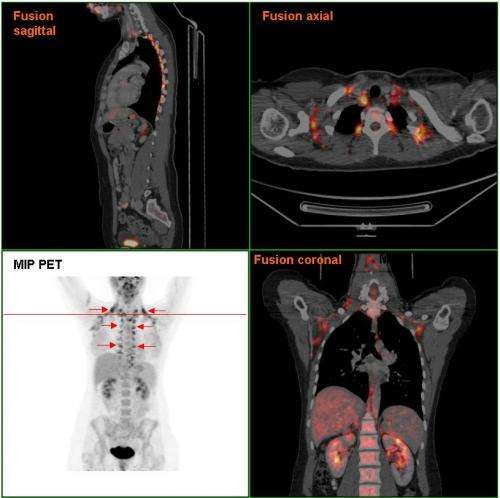
Not all forms are obesity are the same and brown fat could make all the difference. A study led by Florian Kiefer’s research group from the Division of Endocrinology and Metabolism of the Department of Medicine III at MedUni Vienna and Vienna General Hospital shows that people who are seriously overweight (obese) who also have active brown fat have a healthier metabolism and use more energy than obese people without brown fat. The new findings suggest that the presence of brown fat may protect against secondary obesity-related diseases. The study has just been published in the international journal Diabetes.
For years now, medical researchers have been trying to understand why some obese people are less likely to develop health conditions such as diabetes or high blood pressure than others of similar weight. It now seems that an important factor in what is known as “metabolically healthy obesity” has been identified in the form of brown fat.
“Brown fat has long been thought to benefit metabolism because, unlike the much more common white storage fat, it can burn energy in the form of heat. Babies and toddlers in particular use brown adipose tissue to maintain their body temperature but the proportion of brown fat in the body decreases with age and with excess weight,” explains Florian Kiefer.
However, in the recently published study, the Viennese research group discovered that more than a third of severely overweight adults (BMI > 35kg/m2) still have active brown fat. In the study, the volunteers were first exposed to moderate cold using cooling vests to activate brown fat, which was then detected by PET-CT scanning.
“In adults, brown fat is predominantly found at the base of the neck and in the rib cage. A brief period of cold stimulation of about one hour is sufficient to activate it,” said study leader Kiefer. The overweight participants with brown fat displayed a higher energy consumption, less harmful abdominal fat, healthier sugar metabolism and fewer signs of fatty liver disease than a control group of similar weight but with no detectable brown fat.
Kiefer comments: “It’s quite amazing that the participants with brown fat did better on almost all metabolic parameters, even though they had a slightly higher BMI. These data once again show us that it’s not just the quantity of adipose tissue that matters, but more importantly its quality.”
In fact, differences in fat distribution may have contributed to the advantageous metabolic status. In particular, the proportion of deep-lying abdominal fat (visceral fat), which represents a high risk for diabetes and heart attack, was significantly lower in the brown fat group. “It is conceivable that the increased metabolic activity of brown fat will preferentially break down and burn harmful visceral fat stores first. That is why we are currently working hard to develop drug treatments to activate brown fat,” explains Kiefer.
MedUni Vienna scientists from the departments of Biomedical Imaging and Image-guided Therapy and Surgery and from the Department of Laboratory Medicine were also involved in the study.
Medical University of Vienna

